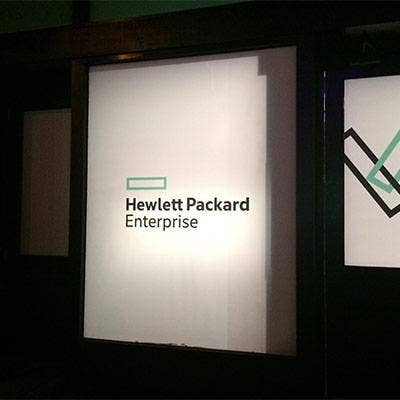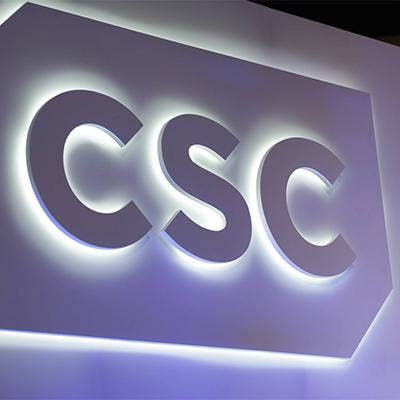CSC CEO Lawrie On The Opportunity, Advantages And Finacial Impact Of The HPE Enterprise Services Merger

Betting On Big
A bigger Computer Sciences Corp., bulked up by a merger with the Enterprise Services unit of Hewlett Packard Enterprise, will allow it to devote more resources to helping larger clients move toward digital platforms, which would offset the sales drop both sides have seen in their legacy offerings recently, according to CSC CEO Mike Lawrie.
Following Tuesday's revelation that CSC and HPE's Enterprise Services unit will come together to create a $26 billion company – the world’s largest pure-play IT solution provider – Lawrie said the combination will improve CSC by enabling massive scale, and giving it a "solid" workforce and experienced leadership that will focus on driving next-generation solutions.
Lawrie in a conference call with analysts following the release of the Falls Church, Va.-based company's fourth quarter fiscal 2016 financial results, said the combined company is expected to do business with more than 5,000 clients.
Once the deal closes, Lawrie will serve as chairman, president and CEO of the new company, with HPE President and CEO Meg Whitman serving on its board of directors.
Here are 10 questions Lawrie fielded during the conference call.
Get all of CRN's DXC Technology coverage here.

Why is the company doing this now?
When our management team arrived at CSC four years ago, we inherited a fragmented operating model, low profitability based on unsupportable cost structures and, frankly, a strategy that was not in tune with the changing marketplace, and we've delivered against many of our turnaround plans and returned CSC to health and profitability. HPE has followed a very similar path and has also seen significant improvements in their business. …
Similarly, both companies recently engaged in spin-offs … to more strongly focus on the needs of their respective clients and provide additional focus to their portfolios. So this merger, I think, is a further refinement and extension of the strategies that drove our spinoffs and builds on the significant progress that both companies have made to date.

What are the advantages of the merger?
First of all, increased scale. Following the merger, the company will be one of the largest IT services business in the world.
Second is what I call complementary industry leadership. CSC and HPE Enterprise Services both have strong vertical expertise. … CSC in insurance, health care (and) financial services, and HPE in pharma, transportation, and travel and telecom. Together we will have a $3 billion plus (in) next-generation business.
Third, we have identified an actionable cost synergy roadmap.
Fourth, we believe the combined company will have the financial platform to pursue the right business investments into next-generation solutions while maintaining a strong cash flow.
Fifth, we think our combined leadership team … will be able to drive significant results based on our proven track records of transforming businesses.

How do the acquisitions you have made since spinning off what is now CSRA ( Xchanging, UXC and ServiceNow ) fit into CSC's business roadmap with this new merger?
We brought great people and skills on with them. But, they were smaller and as a result it was a slow process.
This merger, however, allows us to get to the point of critical mass and get the scale necessary to compete with anybody in the market. That is what's so exciting about this. Years ago, I said ’You’ve got to get fit, you've got to win more and then you've got to take a leadership position,’ and this merger catapults the commercial business into a leadership position globally. ...
So this is all about creating a leadership position, a new foundation and a new starting point.

CSC has stated that the company will save $1.5 billion, is there a potential for more savings moving forward?
We're very comfortable with the $1.5 billion. ... The savings will be spread across a number of areas, ... We've talked about 95 data centers and delivery centers. Obviously that can continue to be consolidated.
There is a significant improvement capability because of the increased scale that we’ll have now on a global basis. … 50 percent of our labor force will be operating in low-cost geographies in over 20 global delivery systems … So yeah, there's a significant opportunity. …There's probably room to grow that as well over time.

Where does a savings of $1.5 billion, come from? Will it come from taking incremental costs out? Or is this really duplication of overlapping resources?
It's a little of both. There is clearly a duplication, I mentioned a couple of areas like the data centers and delivery centers … I think there'll obviously be some synergies that we can get across the sales force and delivery organizations.
The other area is real estate. Real estate - we think - is going to be a significant area of consolidation as well as procurement.
This will allow us to do much more from a global procurement standpoint with the support functions and all of those things built into the synergy roadmap.
These synergies - by the way - don't come all from HPE Enterprise Services. It really is across both organizations.

Does the percentage of your total revenue go up?
That’s exactly right. And the growth rates go up … Many of the run-off contracts that HPE Enterprise Services had … much of that is behind them.
They've also had some very significant new wins over the last year or so, which is contributing to their revenue stream, things like Deutsche Bank and Nokia, just to mention a couple, which have added some incremental revenue to their mix.
… So, when you add that all up, it is a much healthier mix towards the new and growing segments than what we've had.

How will this merger improve CSC's offerings around cloud and next-generation solutions?
We've got $3 billion-plus business in next-generation services - and that is growing on both our side as well as on the HPE Enterprise Services side.
They've got probably … about $8 billion, think of it as [global business service]-type business, so application business, mobility, those kinds of offerings in the marketplace. Then the balance is more of their traditional offerings. … So the profile of the business, our profile around next-generation offerings gets strengthened pretty dramatically with this merger.

How has HPE dealt with the declining business coming from legacy clients and solutions?
They have made a fair amount of progress over the last two years in terms of dealing with their headwinds [which are] the same headwinds that we have had - with traditional clients either moving away or contracts that were in a wind-down phase. Those things caused them a significant revenue headwind. …
They have a strong cloud business, they've got a strong cyber business, they have got a strong big data and analytics business. They've got a good applications business. So they too have made investments in some of these new offerings and that is all offsetting the headwinds in their traditional business.

How will the scale that the new entity will have help it capitalize on opportunity in the market?
I think most importantly for us, as we see more and more clients making a more dramatic shift to this next-generation cloud infrastructure and the modernization and deployment of new applications, that takes scale and it takes financial commitment.
This combination gives us a balance sheet and a financial structure that will allow us to really help major clients around the world make that transformation to the digital world.

What type of overlap are you seeing with HPE's Enterprise Services segment?
The thing that was amazing to me when we went through all of this is how very little overlap there is. Out of the top 200 clients, there's less than a 15 percent overlap.
That gives us an opportunity to expand our footprint in their customer base and for them to expand their footprint in our customer base.